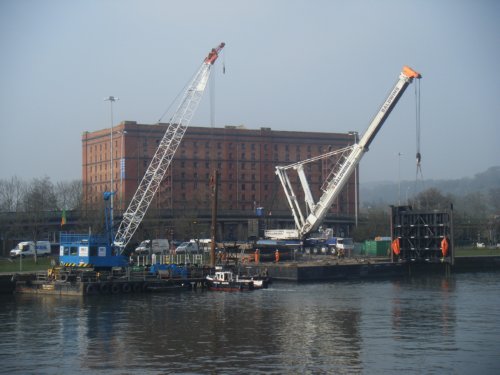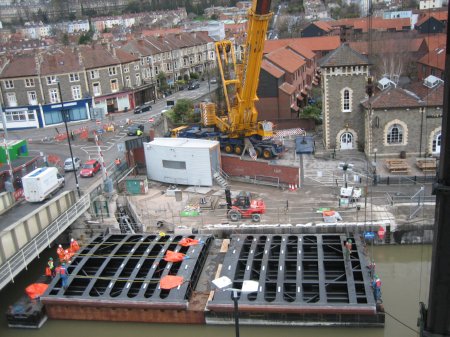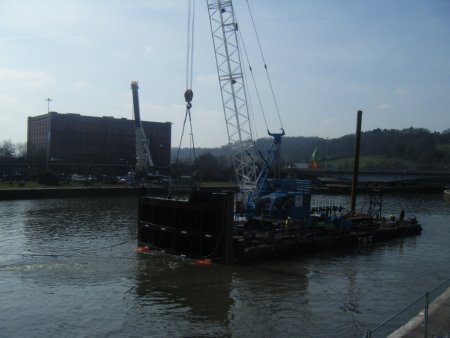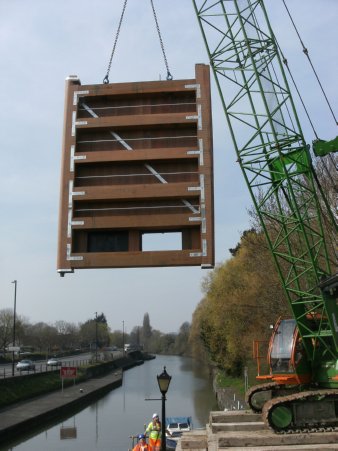 Just completed is the third and final phase of the highly successful £11m Bristol City Docks Capital Project to replace Bristol Floating Harbour’s 140-year-old Victorian lock system, ensuring the future effective working of the docks and safeguarding the city from potential flood risks from the River Avon.
Just completed is the third and final phase of the highly successful £11m Bristol City Docks Capital Project to replace Bristol Floating Harbour’s 140-year-old Victorian lock system, ensuring the future effective working of the docks and safeguarding the city from potential flood risks from the River Avon.
The scheme was carried out for Bristol City Council by BAM Nuttall, who undertook all phases of the project.
Mr Matt Ewing, Project Manager at BAM Nuttall said: “The old lock system was a Victorian water hydraulic system which was unreliable and expensive to maintain. The improvements carried out in this project will ensure that the harbour has a reliable system that will last 100 years.
“The project has gone very well, on time and just below budget and the client is very happy. There was a lot of concern from the client about the works affecting leisure craft using the harbour and impeding accessibility, as well as the swing bridge works carried out affecting traffic flows. However the project caused hardly any interruption in any of these areas.”
The third phase (the smallest element of the scheme) involved replacing the manually operated oak gates at Netham Lock, where boats from the River Avon gain access to the floating harbour.
Built in about 1809, Netham lock marks the end of the Feeder Canal. The lock gates here ensure that extreme high spring tides that come over Netham weir do not enter the city and that flood water from the River Avon is diverted over the weir.
The scheme involved replacement of the lock’s four gates with new timber gates sympathetic to the historical nature of the location and designed to meet the standards of the latest Eurocode for lock gates. The new gates each weigh eight tons, with the two lower gates, each being 16ft high, 11ft wide and 1ft thick, and the two upper gates, being almost 20ft high.
The gates, which were specially made from Ekki hardwood timber – a sustainable timber for marine environments – and should last for at least 50 years, were brought to Bristol by road and lowered into place by a 70-ton crawler crane.
The upper gates are designed and constructed in such a way that they could easily be reinforced and retrofitted for increased flood levels if required. The design of the new gates is also capable of retrofitting to take mechanical operation of the sluices and future mechanisation of the gates should this be required in the future.
In addition to the installation of the gates, this phase included the refurbishment of the Underfall Yard sluice mechanisms.
Phase one of the overall project saw the replacement of gates and the upgrading of the highway swing bridge at Junction Lock in the Cumberland Basin, as well as the installation of hydraulic pumps to operate the gates, sluices and paddles. A 110-tonne crane on a barge was used to lift the old gates out of their hinges and then manoeuvre them into Cumberland Basin for removal, which was done via a 500-tonne crane. This ensured that the harbour had a secure and reliable set of gates, enabling the project team to move on to the second phase.
The second phase involved upgrading the infrastructure of the entrance dock where the floating harbour meets the River Avon near the Clifton Suspension Bridge, and installing new floodgates.
Work on the Bristol City Docks Capital Project commenced in October 2008 after Bristol City Council found there was ‘significant risk’ that the 140-year-old gates at Junction Lock could fail. If the gates failed then the water in the floating harbour would go out with the tide, causing the harbour walls to collapse and the nearby buildings and houseboats to go with them.
Managing the interface between new and Victorian engineering and construction techniques created a few challenges, with Installing the new gates and ensuring they sealed being a major concern.






